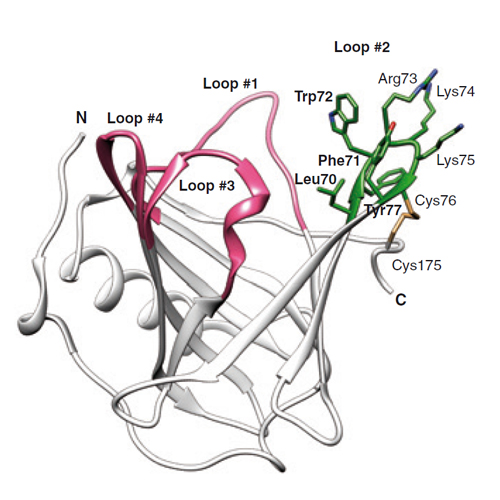Anticalins directed against vascular endothelial growth factor receptor 3 (VEGFR-3) with picomolar affinities show potential for medical therapy and in vivo imaging
26-Jul-2016
Biological Chemistry, Band 398, Heft 1, Seiten 39–55, ISSN (Online) 1437-4315, ISSN (Print) 1431-6730, DOI: https://doi.org/10.1515/hsz-2016-0195
Biological Chemistry, online article
Members of the vascular endothelial growth factor receptor (VEGFR) family play a central role in angiogenesis as well as lymphangiogenesis and are crucial for tumor growth and metastasis. In particular, VEGFR-3 expression is induced in endothelial cells during tumor angiogenesis. We report the design of anticalins that specifically recognize the ligand-binding domains 1 and 2 of VEGFR-3. To this end, a library of the lipocalin 2 scaffold with 20 randomized positions distributed across its binding site was subjected to phage display selection and enzyme linked immunosorbent assay (ELISA) screening using the VEGF-C binding fragment (D1-2) or the entire extracellular region (D1-7) of VEGFR-3 as target proteins. Promising anticalin candidates were produced in Escherichia coli and biochemically characterized. Three variants with different receptor binding modes were identified, and two of them were optimized with regard to target affinity as well as folding efficiency. The resulting anticalins show dissociation constants down to the single-digit picomolar range. Specific recognition of VEGFR-3 on cells was demonstrated by immunofluorescence microscopy. Competitive binding versus VEGF-C was demonstrated for two of the anticalins with Ki values in the low nanomolar range. Based on these data, VEGFR-3 specific anticalins provide promising reagents for the diagnosis and/or therapeutic intervention of tumor-associated vessel growth.











